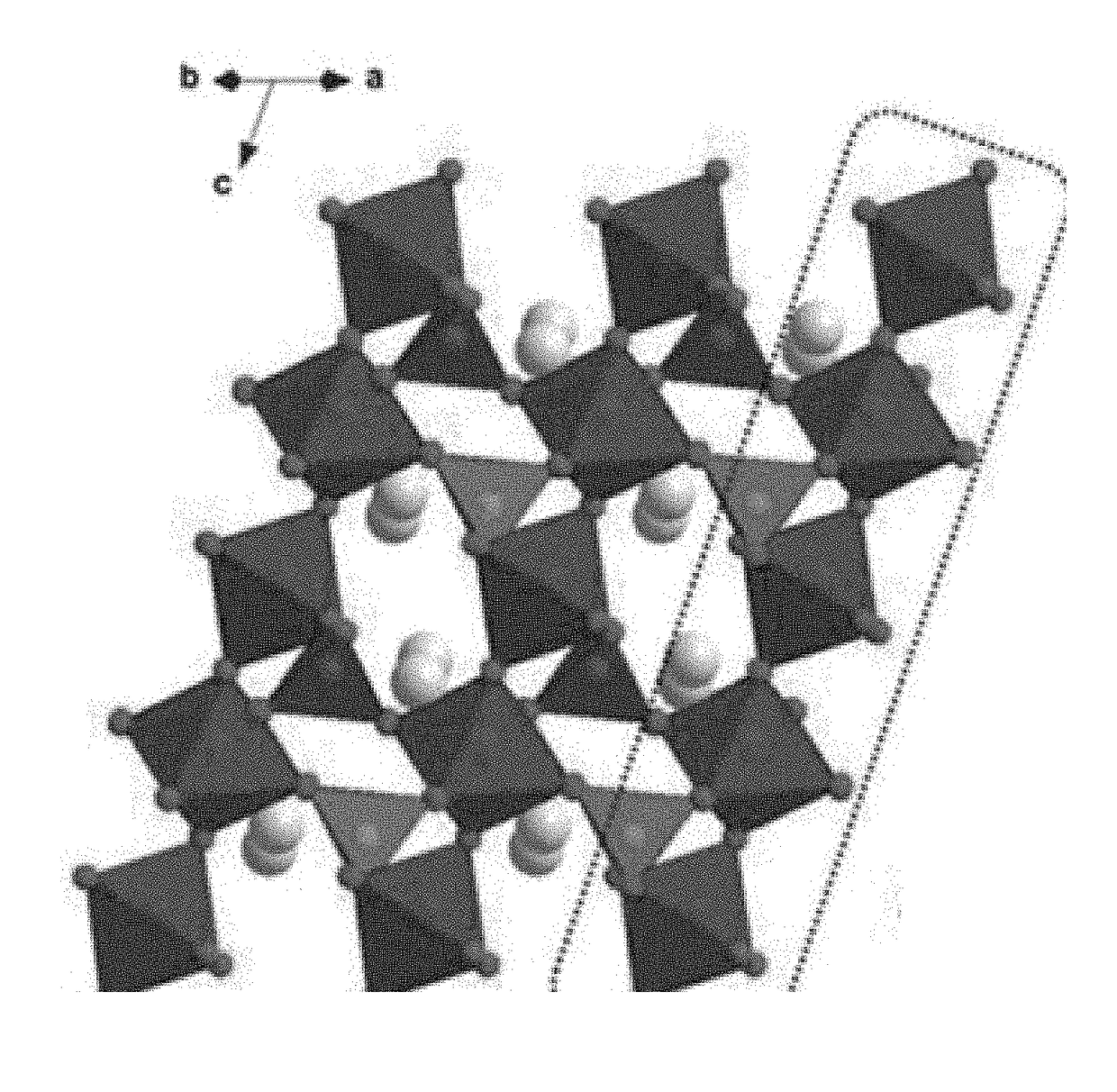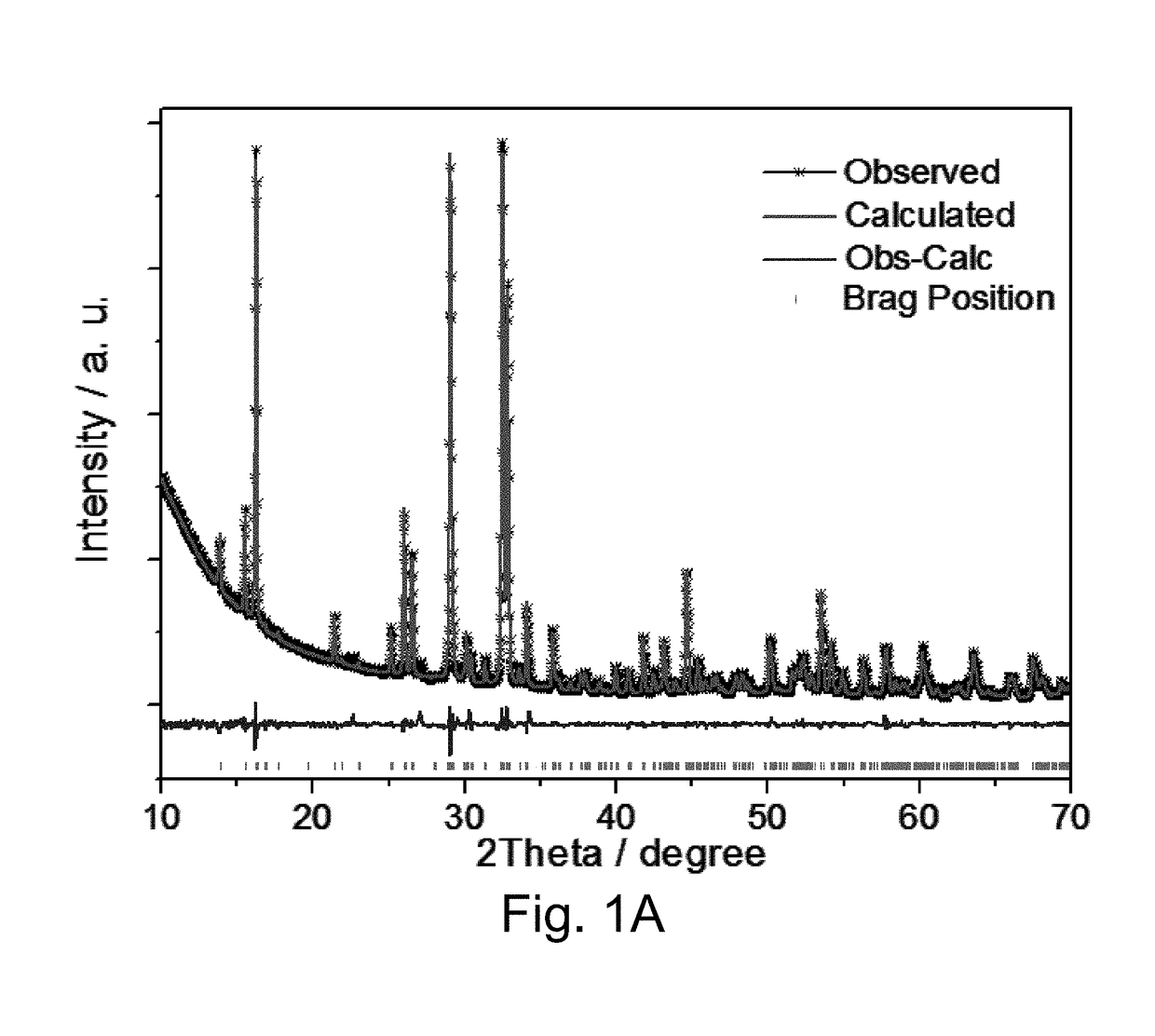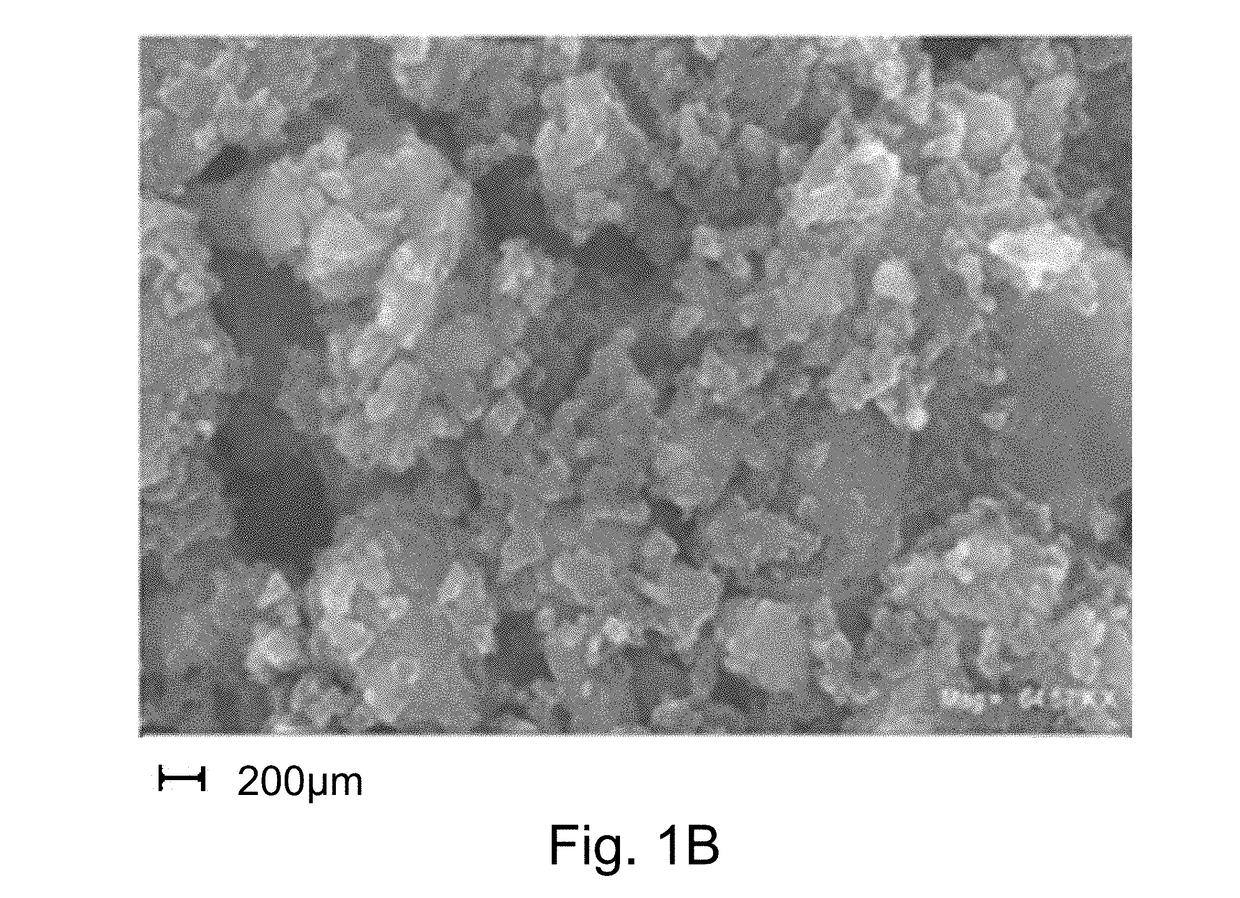Kvopo4 cathode for sodium ion batteries
a sodium ion battery and phosphate technology, applied in the field of electrochemical materials for batteries, can solve the problems of increasing the ubiquity of portable electronics, increasing the concern for the scalability of lithium ion based systems, and high cost of lithium, so as to achieve rapid sodium diffusion, large cell volume, and preserve cell size.
- Summary
- Abstract
- Description
- Claims
- Application Information
AI Technical Summary
Benefits of technology
Problems solved by technology
Method used
Image
Examples
example 1
[0101]Synthesis of KVOPO4 Cathode Material
[0102]1.17 g of ammonium metavanadate, 1.15 g of ammonium phosphate monobasic and 0.69 g of potassium carbonate were uniformly mixed by 4 hours planetary ball milling in the presence of 20 mL acetone. The obtained powders were completely dried in air at room temperature, which were used as precursor for the following solid state reaction, conducted under an argon atmosphere.
[0103]The dry powders were pressed into pellets at a pressure of 3 tons for 2 mins, and each pellet has a typical weight of 200 mg. Five such pellets were used for one batch solid state synthesis. The pellets were heated to 700° C. with a heating rate of 5° C. per min, maintained at 700° C. for 10 hours, and then cooled down to room temperature at cooling rate of 5° C. per min.
[0104]Reddish brown powders were obtained after the solid state reaction process. The typical yield is 700 mg for each batch.
[0105]400 mg of KVOPO4 reddish brown powder and 114 mg of carbon black we...
PUM
| Property | Measurement | Unit |
|---|---|---|
| Temperature | aaaaa | aaaaa |
| Temperature | aaaaa | aaaaa |
| Temperature | aaaaa | aaaaa |
Abstract
Description
Claims
Application Information
 Login to View More
Login to View More - R&D
- Intellectual Property
- Life Sciences
- Materials
- Tech Scout
- Unparalleled Data Quality
- Higher Quality Content
- 60% Fewer Hallucinations
Browse by: Latest US Patents, China's latest patents, Technical Efficacy Thesaurus, Application Domain, Technology Topic, Popular Technical Reports.
© 2025 PatSnap. All rights reserved.Legal|Privacy policy|Modern Slavery Act Transparency Statement|Sitemap|About US| Contact US: help@patsnap.com



